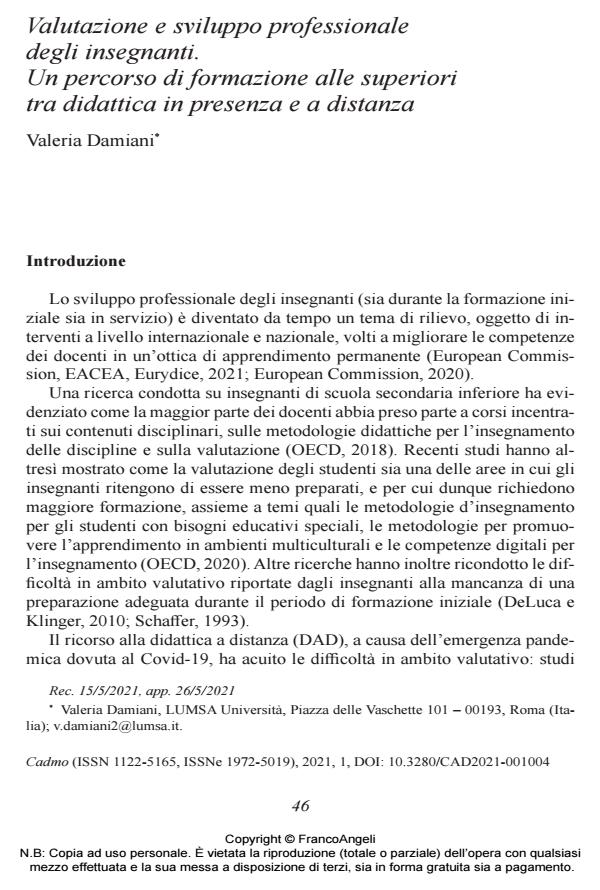Classroom assessment and teachers’ professional develop¬ment. Experience from a teacher training course in secondary schools be¬fore and during the Covid-19 outbreak
Journal title CADMO
Author/s Valeria Damiani
Publishing Year 2021 Issue 2021/1
Language Italian Pages 17 P. 46-62 File size 211 KB
DOI 10.3280/CAD2021-001004
DOI is like a bar code for intellectual property: to have more infomation
click here
Below, you can see the article first page
If you want to buy this article in PDF format, you can do it, following the instructions to buy download credits

FrancoAngeli is member of Publishers International Linking Association, Inc (PILA), a not-for-profit association which run the CrossRef service enabling links to and from online scholarly content.
This contribution presents a reflection on teachers’ professional development regarding classroom assessment, which emerged from the experience of a training course carried out for a network of secondary schools in Rome in 2019/2020, that was interrupted due to the COVID-19 outbreak, and from a follow up group interview, carried out at the end of the school year to discuss teachers’ perspec¬tives and experience related to assessment during online teaching. In this paper, remote schooling is considered as an occasion in which, due to the inefficacy of traditional teaching methods and tools, teachers were asked to make a change within highly established practices. The reflections on assessment arise from the integration between the face to face teachers’ training and their experience during the pandemic on online teaching, highlighting key aspects and challenges that characterise classroom assessment in secondary education in Italy and suggesting further development for future in-service training activities. Results highlight the need to focus teacher professional development on some key elements related to classroom assessment (in terms of item writing, validity and reliability, for instance), that emerged as critical issues from the training course, and on the intersection between teacher practices and assessment methodologies and tools.
Keywords: Classroom assessment, Covid-19, Italy, remote schooling, online teaching.
Valeria Damiani, Valutazione e sviluppo professionale degli insegnanti. Un percorso di formazione alle superiori tra didattica in presenza e a distanza in "CADMO" 1/2021, pp 46-62, DOI: 10.3280/CAD2021-001004